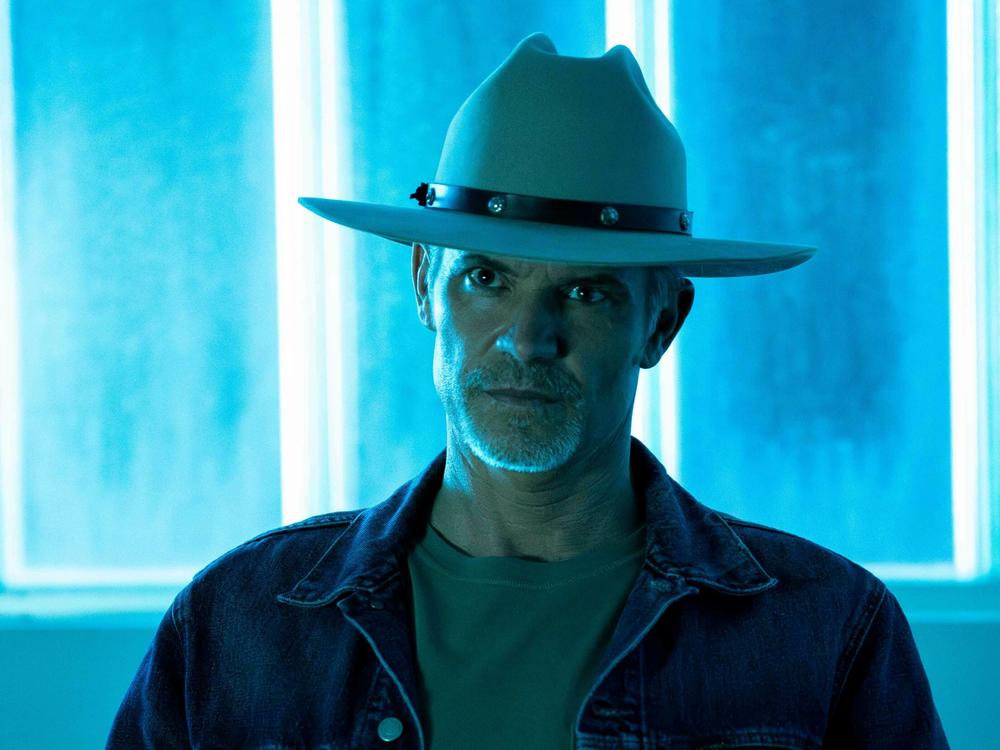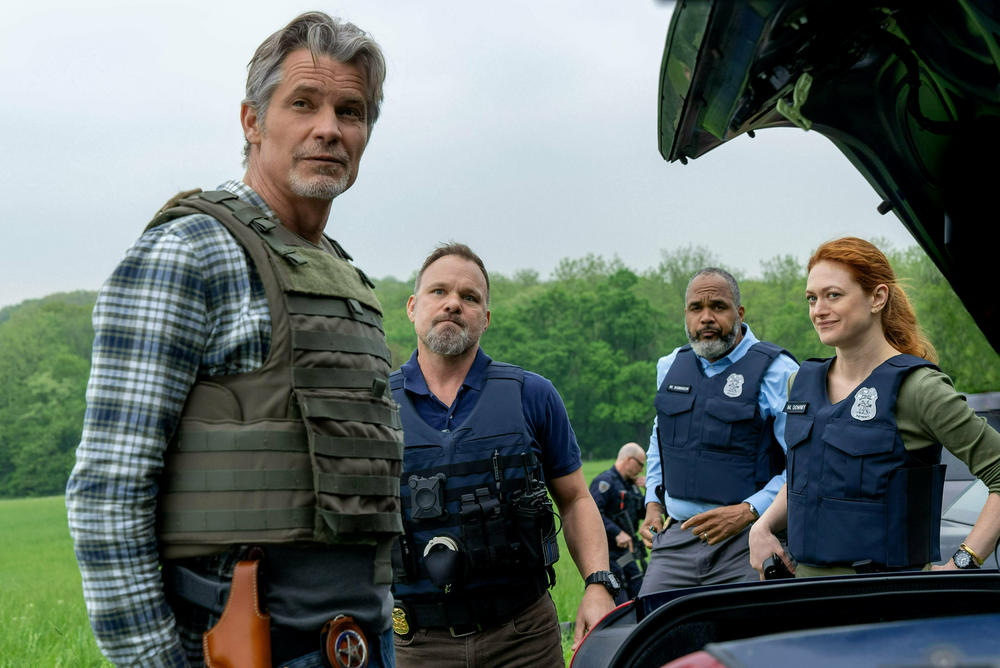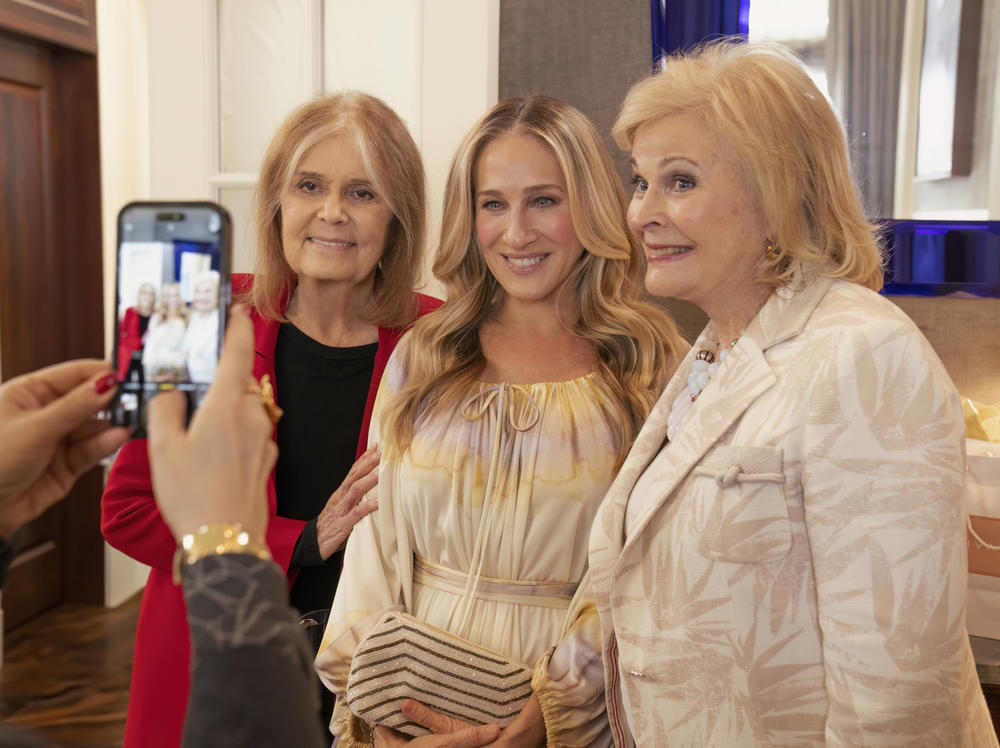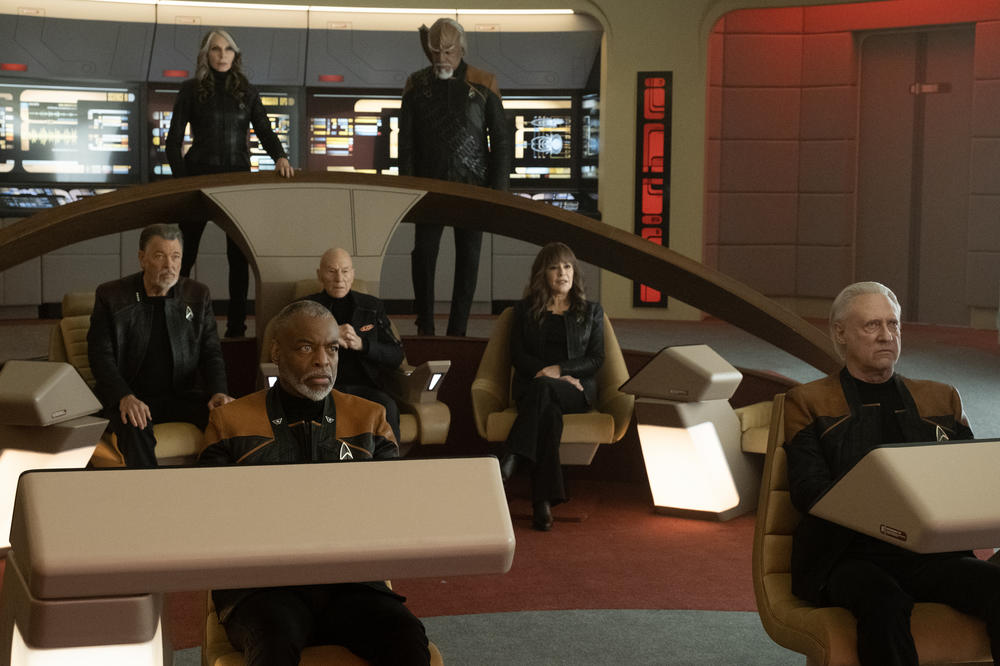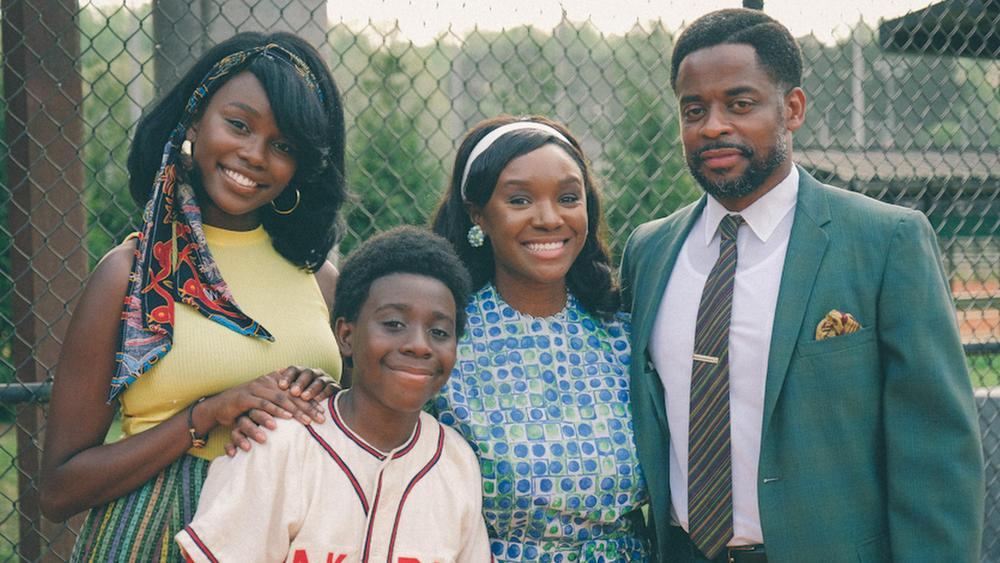Section Branding
Header Content
TV reboots have to answer one question: Why now? Just look at 'Justified'
Primary Content
As a stone Justified fan, I'm just not sure what to make of FX's new limited series revival, Justified: City Primeval.
On the surface, it offers what any good revival does: The bracing, nostalgia-laced return of a beloved character — Timothy Olyphant's modern-day, Stetson-wearing lawman Raylan Givens — in a new adventure. This time, it's based on a novel by the legendary author who created Givens, Elmore Leonard, set in Detroit, instead of the Kentucky hollers and small towns where the original "Justified" series took place.
But Leonard's 1980 book City Primeval features a different protagonist, not Givens. So it's not surprising that FX's version feels like they lifted poor Raylan out of an environment where he makes sense and plopped him into a place where his charm, street savvy, Southern roots and drive to do the job is blunted and less appealing.
Which highlights the particular challenges of the modern-day TV revival/reboot/reimagining. The best of these evoke a sense of the original but offer a fresh perspective and, if possible, corrects and improves on the shortcomings of the original series.
Most of all, they have to answer a simple, yet telling question: Why is this happening now?
Some answers are just about business. A media company has intellectual property it wants to exploit. Stars of the show are willing to return for one more payday. Fans have bought enough ancillary products to show there's a market.
But there's only one answer that leads to a great series: Someone has found an amazing new story which must be told with these popular characters. And, for me, Justifed: City Primeval, good as it is in spots, just doesn't quite reach that pinnacle.
When a TV revival really works (or doesn't)
City Primeval makes a few odd choices for a revival. For most of the episodes, there is only one character from the original series in the new story (I don't count Givens' daughter, who was a baby in the original series and is a teen played by Olyphant's real-life daughter in the revival). He's chasing around a charismatic killer in Detroit, where Raylan's "old soul in the modern age" vibe doesn't wear as well.
And the issues we see Givens weighing in the revival are the same ones he navigated in the previous series – his drive to take on psychopathic lawbreakers and the toll it takes on him and those who love him. It makes for a passable enough drama for those jonesing to see Givens in action again. But for those of us who remember the original series' sharp wit and eye for compelling, original characters the question surfaces again: Why are we seeing this now?
Another revival which struggled with this question recently is the Sex and the City spinoff, And Just Like That... So much of the original series' appeal was rooted in how we felt about sex, gender, wealth, privilege, race and class back in the late 1990s and early 2000s. The update, now available on the Max streaming service, hasn't provided a great answer for why we should check in on these characters nearly 20 years later — besides getting to see a few non-white and gay characters bask in the privilege that Carrie and her cohorts blithely enjoyed back in the day.
They're still status-obsessed, unaware of their privilege and shoehorning characters of color into their storylines to avoid criticism (but mostly without one of the show's coolest characters, Kim Cattrall's Samantha Jones, courtesy of Cattrall's ongoing feud with the rest of the cast). Fans eager to see these characters in new adventures may not care about these criticisms. But the rest of us are left scratching our heads and wondering why this show exists at all.
As a card-carrying sci fi nerd, I know I'm biased. But I think the third season of Star Trek: Picard was a much better example of a revival hitting on all cylinders. The season, which dropped earlier this year, reunited most major characters from Star Trek: The Next Generation in a new adventure which allowed old characters to show fresh sides in a show with amped-up, modern special effects.
Maternal ship's doctor Beverly Crusher came back as a butt-kicking, altruistic action hero with a secret past she'd hidden from her former flame, a wizened Admiral Jean-Luc Picard. Stalwart second-in-command Will Riker was a captain struggling to reconnect with his own family. Formerly blind engineer Geordi La Forge, now outfitted with awesome artificial eyes, was a parent himself. The new threat facing the galaxy was bound up in their shared history, but also revealed new depths to the characters that fans loved.
Nearly 30 years after the original series stopped making new episodes, the Picard revival was so successful it sparked an online petition by fans to continue the story in a new series based on a beloved video game, Star Trek: Legacy.
In Trek's case, that central question — why now? — had a powerful answer.
When a TV reimagining really works
The original 1988 version of The Wonder Years always stuck in my craw a bit. It was set at a time that was pivotal for race relations and Black people – two decades earlier, in 1968 – but featured no Black characters.
So ABC's rejiggering of the show, centered this time on an all-Black family, felt a little bit like an apology. It's also why this version – a heartwarming, gently funny tale featuring Don Cheadle as the grown-up voice of 12-year-old protagonist Dean Williams – works so nicely. Not only do we meet an authentic, entertaining family who couldn't be more different than Fred Savage's Kevin Arnold and his relations in suburbia, we see the show's unique flashback formula used to tell new stories about a Black kid coming of age during times which affected black families very differently.
Instead of recreating the show as the Arnolds in blackface, ABC reimagined The Wonder Years as a new tale set at the same time, focused on a different family. And because period pieces are always about the times when they are made rather than the times they depict, all the issues they present are handled far differently than they would have been in the late 1980s.
When a TV reboot (kind of ) works
For the purposes of this story, I've defined a TV reboot in slightly stricter terms than usual – as a new version of an old program featuring the same characters in the same setting. Think of the History channel's remake of the classic 1970s-era miniseries Roots in 2016. Or Netflix's series version of Spike Lee's first major film, She's Gotta Have It, in 2017. Stretch it a bit, and you might even include other Netflix standouts like Lost in Space and Wednesday (which is really just a reboot of The Addams Family).
In these cases, new actors played the same characters from the original program; they're not older or younger versions, so they're essentially rewriting – or, rebooting – stories featuring the core characters.
Often, it's toughest for these kinds of shows to answer that central question. History's Roots, developed to reach a new generation, had lots of advantages: better effects and photography, upgraded historical facts, and Black characters who fought harder against exploitation. But it couldn't match the impact of the original Roots, which essentially created the TV miniseries format by presenting the most explicit vision of slavery's cruelty yet seen on the small screen.
Sometimes, even with the best development and intentions, recreating a TV classic is like trying to catch lightning in a bottle for a second time – a longshot that won't yield the dividends you expect, even when you get it mostly right.
Copyright 2023 NPR. To see more, visit https://www.npr.org.
